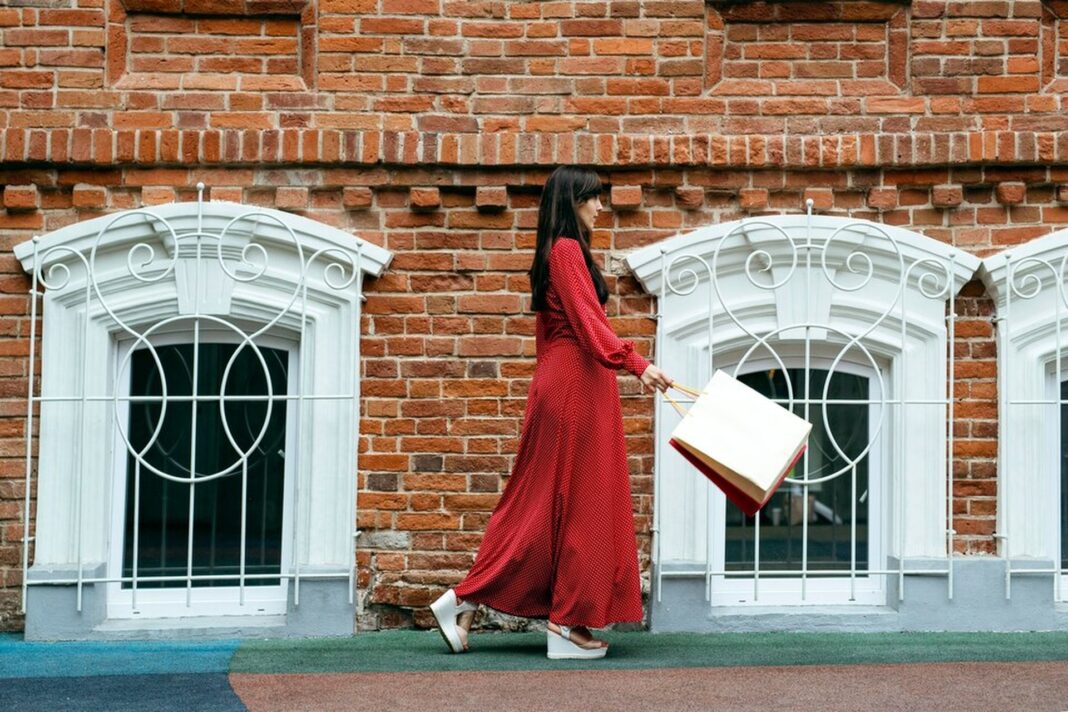Beyond clothes and accessories luxury fashion is the apex of the fashion business. Its unique combination of creativity, legacy innovation and cultural importance transcends product production. Luxury fashion brands are symbols telling generations spanning tales with superb workmanship and imaginative leadership. The industry drives global style sustainability and cultural discussion.
Luxury fashion blends history and contemporary predicting a future of exclusivity and inclusion. Sustainability and grandeur coexist in this unusual industry where social media democratizing influence meets a demand for uniqueness and distinction. This investigation shows how craftsmanship, inventive visionaries, sustainability , cultural influences and social media form this unique world.
Craftsmanship That Defines Luxury
Luxury apparel depends on exquisite workmanship. It turns clothes into pieces of art with meticulous detailing, precise processes and quality. Luxury outerwear requires meticulous material selection and every stitch is a monument to effort. Each haute couture item is handcrafted by trained craftsmen typically taking hundreds of hours.
In addition to apparel, watchmakers , jewelers and leather artists create timeless accessories. They focus on practicality and endurance for generations as well as beauty. Luxury clothes are known for their perfection. It blends old and new with respect for tradition.
Luxury companies‘ clothes are valued not merely worn. Each artwork tells a narrative and represents originality, talent and commitment due to its workmanship. Customers value each item’s uniqueness and personal touch. Thus workmanship is the essence of luxury keeping its appeal in a fast paced ever changing global fashion world.
The Visionaries Behind Iconic Labels
Luxury fashion firms have always been led by visionaries who innovate and redefine trends. Creative leaders combine art and commerce to make Chanel Louis Vuitton Gucci and Dior iconic. They convey worldwide stories via their collections as designers and storytellers. Their aim goes beyond fashion to address cultural and societal issues.
Visionaries capture the zeitgeist and predict future trends with unmatched insight. They study art, architecture and history to inform their creations. These distinct abilities to take inspiration from diverse aspects of life set them apart and advance their businesses. They communicate ideas and creativity via their collections, not just clothes.
They change fashion discussions influencing catwalks and streetwear. Visionaries blend innovation and tradition by challenging norms while preserving their brand heritage. Influential and luxurious companies depend on this leadership. These visionaries make luxury clothes an experience by cultivating talent and embracing change.
Sustainable Fashion: The New Luxury
Luxury fashion prioritizes sustainability. It shows a dedication to attractive goods and environmental sustainability. Sustainable methods including responsible sourcing ethical labor and new materials are growing among luxury firms.
This move goes beyond trend following. It recognizes fashion, environmental and social effects. This trend began with Stella McCartney recyclable materials and open supplier networks. Other institutions take similar steps to demonstrate their sustainability.
This has redefined luxury sustainability is now a core brand value and identity. Now more than ever conscientious consumption makes this transformation necessary. Consumers want quality and ethical goods.
Luxury sustainable fashion means intelligent responsible goods. It represents a shift toward a more equal society where luxury means justice, longevity and respect for everyone. Brands are reinventing luxury by investing in sustainable solutions that benefit society and the environment.
From Runway To Reality: The Impact Of Fashion Shows
Luxury companies use fashion shows to communicate and entertain. They reveal designers‘ visions and themes for the next seasons. Fashion shows influence trends worldwide from high end to cheap fashion.
These shows influence consumer views beyond the glitz. Directly connecting companies with their audiences creates an engaging and transforming experience. They communicate the brand narrative visually.
Fashion shows surpass typical presentations with creative production music and performance art. They also host fashion industry networking events for buyers, reporters and influencers to discuss new collections. This convergence boosts brand momentum by creating buzz.
Paris, Milan , New York and London fashion weeks have become cultural spectacles. Live streaming has made fashion presentations more accessible thanks to internet channels. This democratization may weaken exclusivity but also enhances the brand worldwide reach and gives premium fashion new energy and ideas. Despite the digital era these programs are essential.
Cultural Influences In Luxury Fashion
Luxury fashion designers take inspiration from worldwide cultures. This celebrates variety and highlights cultural complexity. Cultural influences for luxury apparel include African art elaborate patterns, Japanese design delicate simplicity and Indian materials‘ brilliant hues.
They create authenticity and invite customers into a world where apparel tells tales and bridges cultures. Leading businesses engage with local craftspeople to promote traditional skills and empower them. Avoiding cultural appropriation requires attention and respect for cultural influences.
Honoring the underlying culture is vital. Cultural interaction not exploitation. Tap into this cultural wellspring to boost creativity and encourage businesses to develop respectfully and revolutionarily.
It helps premium clothes stay new and relevant. Cross cultural engagement helps firms appeal to a varied and cosmopolitan consumer in today’s globalized market. Cultural influences provide luxury fashion with a multidimensional universe that blends traditional and modern art.
How Do Luxury Brands Maintain Exclusivity?
Luxury fashion is exclusive unlike mass market items. Luxury companies preserve exclusivity via restricted manufacturing, high costs and distinctive designs. Luxury objects are expensive due to their high quality and workmanship and aim to remain inaccessible to the typical customer.
Products become more attractive with less availability. Exclusive limited editions and customized works highlight originality. Luxury businesses use selective marketing and smart collaborations to project exclusivity. They prevent overexposure by employing high profile events and carefully picked sponsorships to stay mysterious.
This controlled image draws an elite making other customers aspirational. Additionally premium shop surroundings matter. Retail spaces are carefully created to represent the brand’s past and values.
The purchasing experience is tailored to meet customer expectations. This drive to perfection goes beyond the product making every brand contact unforgettable. Luxury businesses maintain exclusivity via scarcity, creative branding and excellent service.
What Impact Has Social Media Had On Luxury Fashion?
Social media has changed luxury fashion, opening new channels for interaction and development. Instagram, Facebook and TikTok allow companies to reach people directly, breaking down exclusivity.
Curated digital content lets companies tell their stories, launch new collections and impact global fashion trends in real time. Social media influencers and celebrity endorsements boost company awareness and revenue. Luxury becomes more accessible and appealing via emotionally engaging aspirational material.
Social media democratization may undermine luxury items‘ uniqueness. Brands are balancing their high end image with their massive consumer reach. Interactive elements behind the scenes access and engaging stories keep interest and exclusivity.
Social media also allows direct customer input and involvement helping firms adapt to changing consumer needs. This involvement builds community and connects customers to the brand values. Social media affects luxury marketing but also provides unprecedented chances for creativity and interaction reshaping luxury fashion for a new age.




